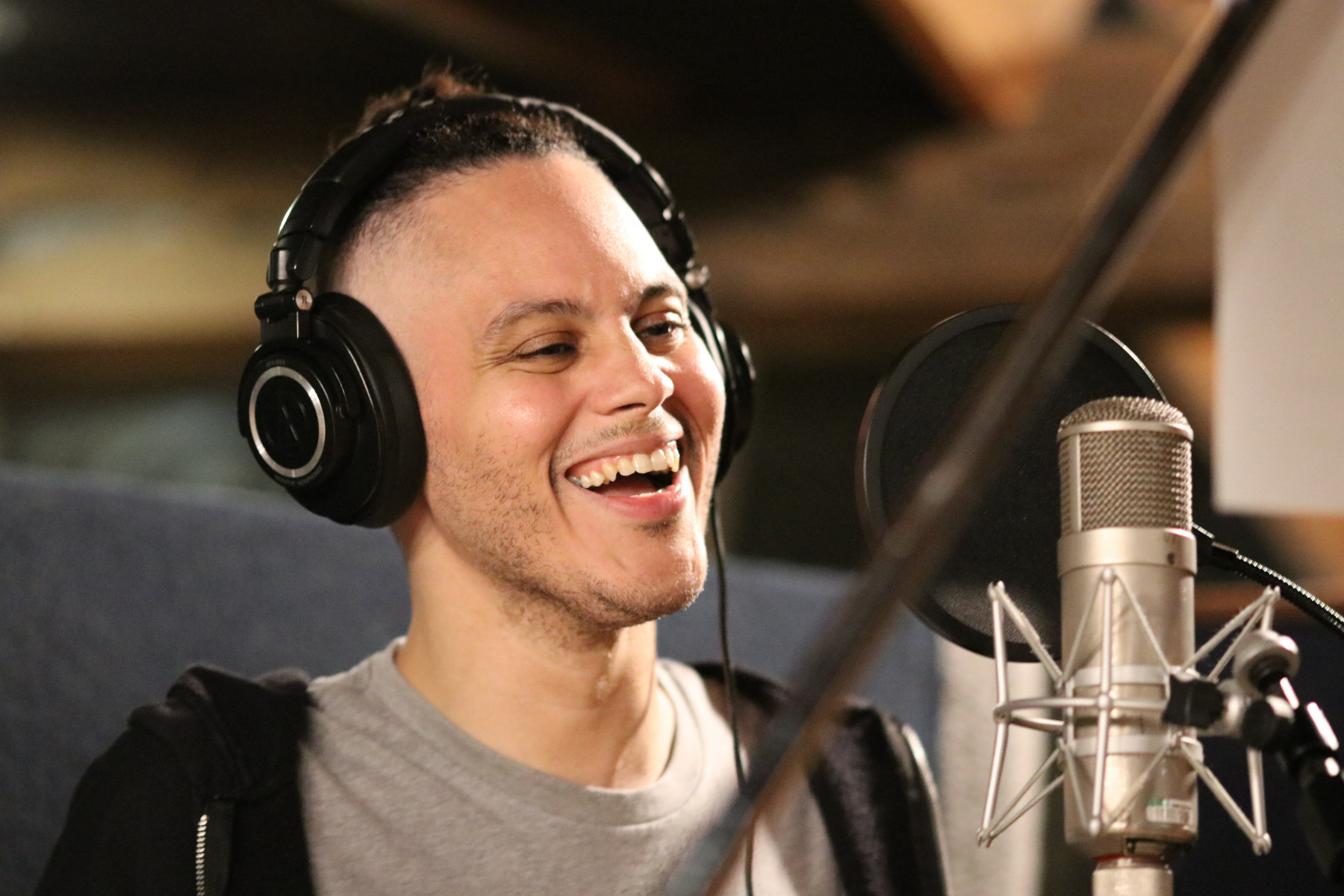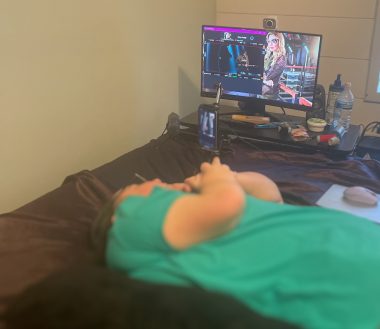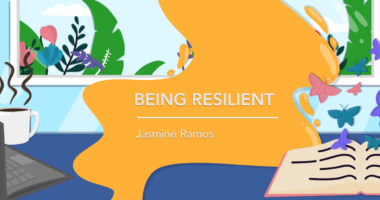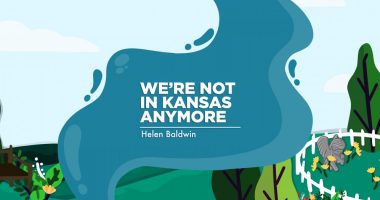Artist With SMA Pens Song ‘SPACES’ About Looking Beyond Disability

James Ian records his vocals for "Spaces." (Photo courtesy of Genentech)
A song written and performed by an artist with spinal muscular atrophy (SMA) is the latest project to come out of Genentech’s SMA My Way program, a collaboration that allows those in the SMA community to share knowledge and experiences with others affected by the disease, as well as raise awareness.
“SPACES” was primarily written by singer James Ian, who was diagnosed with SMA type 3 as a teenager. It was released on all major music platforms on Nov. 9. The accompanying music video was directed by Dominick Evans, a disability consultant in Hollywood and an SMA type 3 patient, who had to work on the film remotely from his bed outside Detroit, Michigan. And the cover art of the single was created by Zarek DeMarco Elizondo, who has SMA type 2.
[yotuwp type=”videos” id=”ZLyRpDn9bTo” ]
The inspiration for the title and lyrics of the song comes from a group collaboration with Ian, SMA patients, and heavy-hitting, Grammy-nominated record producers and executives; it was sponsored and coordinated by Genentech.
However, the basic premise for “SPACES” came from Ian, who, at 39 years old, feels like SMA has made him invisible to others. In a video interview with SMA News Today, Ian said the disease has always overshadowed the SMA community’s accomplishments.
“That came from this idea of not being seen as people with SMA, people with disabilities, and kind of being looked through or looked past and just not really considered or taken seriously,” Ian said. “We’re here in these spaces whether you like it or not. We’re doing really cool things in these spaces.”
Further proving that point is the director of the film, Evans, who also is transgender, queer, and non-binary. Because of a lack of access to equipment in his past and a history of accidents, he has chronic pain and is unable to walk or sit up straight.
Evans graduated from Wright State University, in Ohio, with a Bachelor of Fine Arts in film in 2015, but this is the first opportunity he’s had to direct a video of this magnitude — with a full production crew and an on-site director. The director, Zach Merck, has worked on commercials for brands such as Chevy, Travelocity, Ram, and GMC.

Dominick Evans calls into the set of the “SPACES” music video. (Photo courtesy of Dominick Evans)
“It’s been amazing because I feel like people actually believed in me that I could do this and I was given my first chance to show what I can do and I hope people see that I can do really awesome things,” said Evans, 40.
The production team ensured that Evans could Zoom into the set and direct the music video as if he were there. A large computer monitor situated in front of him allowed him to see the scene directly through the camera, and another metal arm extending from there held his iPhone and allowed him to FaceTime with the crew.
Evans, who started a popular Twitter chat #FilmDis, which focuses on disability representation and now produces full-length studies on the topic with his partner, knew that he wanted the stories in the music video to be diverse, not just disability-wise, but also gender, race, and age.
Most of the video follows the lives of a handful of people with SMA and is interspersed with cuts to Ian performing “SPACES” in front of what appears to be a large crowd. In reality, a few of the people included in the video, like Shane and Hannah Burcaw, well-known disability advocates, plus the crew, were watching. Computer-generated imagery added more silhouettes of others — both sitting in wheelchairs and standing — to the backdrop.
One of those SMA patients — many of whom also contribute to the SMA May Way education and social media initiatives — is Cory Jacobson, a woman with the condition who also is a birth and foster mother. Evans asked her to capture organic video of her life, like playing with her girls or listening to her husband, also a musician, play guitar.
Evans, who doesn’t describe himself as a “crier,” said he lost his composure when watching the video back and seeing 3-year-old Céline Domalski, who has SMA type 1, walk toward the camera. People with SMA have a distinct way of walking, or waddling, Evans said. Before he was in a wheelchair full time, Evans walked the same way and got teased at school.
“I thought of all the kids like me, that have never seen themselves, that hate themselves or say there’s something wrong with me, or I’m not good enough for this world. All of those feelings I had, I don’t want any other kid that has SMA to ever feel that way,” Evans said. “I knew that this video was going to be powerful because it was going to give people moments like that.”
The message behind “SPACES” and seeing people beyond their disability is imbued throughout the song. Ian likes to focus on the lyric, “If there’s one thing to see, it’s my humanity.”
“We want people to know that we’re human, because they don’t even look at us,” Ian said.
While Ian has a unique limp that separates him from the crowd, it’s something he’s embraced — a perspective reflected in the lyrics “I’m not invisible, I’m an original.”
“I always in life tried to be as unique as I can, and put my spin on it, and be like, ‘Hey, if you’re going to be looking at me, gazing at my limp or whatever, I’m gonna make it cool,’” Ian said.
In more ways than one, “SPACES” practices what it preaches. It gives those with disabilities a chance to show their talents to a world that isn’t always so receptive, its makers say. A world that looks past the eye-level of a wheelchair, according to Ian.
“I really hope this song helps other people with SMA and other disabilities get cool opportunities to do what they love,” Ian said. “Everyone deserves to get a chance to live out their dreams and do what they want to do.”








